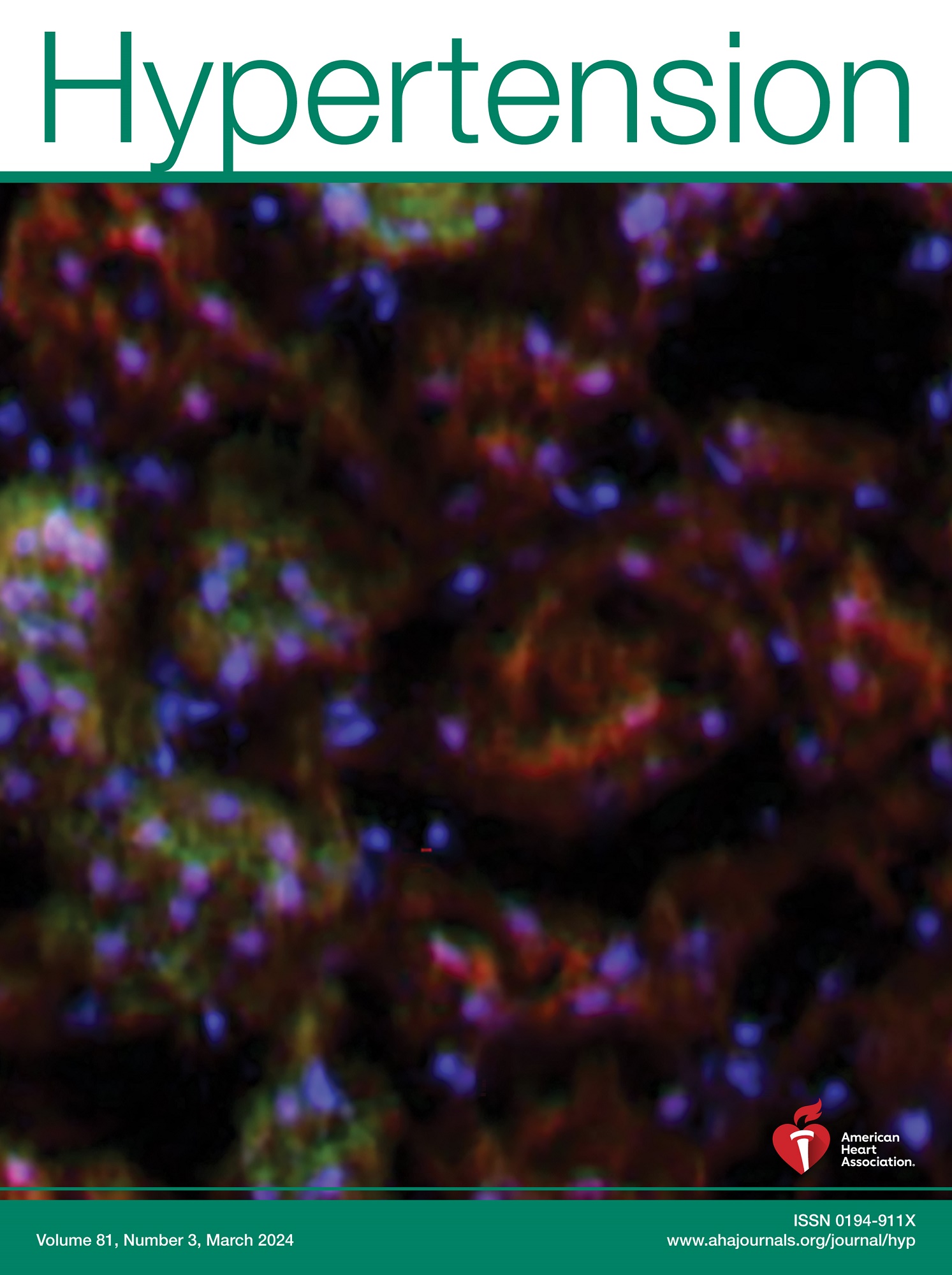Perirenal Adipose Tissue and Hypertension: Observational and Genetic Analyses.
IF 8.2
1区 医学
Q1 PERIPHERAL VASCULAR DISEASE
引用次数: 0
Abstract
BACKGROUND Perirenal adipose tissue (PRAT) consists of white and brown adipocytes with good vascularization and dense innervation, which could influence the blood pressure. We aim to investigate the association of PRAT thickness with risks of overall and specific forms of hypertension. METHODS We measured PRAT thickness in the UK Biobank and CONPASS (Chongqing Primary Aldosteronism Study). We prospectively examined the correlation between PRAT thickness and incident hypertension in the UK Biobank. We cross-sectionally explored associations between PRAT thickness and common forms of hypertension in CONPASS. Integrating data from GWAS (Genome-Wide Association Study), we investigated the potential causal relationship between PRAT and hypertension forms by 2-sample Mendelian randomization analyses. RESULTS In the prospective analysis of the UK Biobank, participants whose PRAT thickness was ≥46.1 mm showed a higher risk of developing hypertension than participants whose PRAT thickness was <16.4 mm (hazard ratio, 2.91 [95% CI, 1.97-4.32]). In the cross-sectional analysis of CONPASS, a 1 SD increment in PRAT thickness was associated with a 2.77-fold higher adjusted odds of low-renin essential hypertension and a 3.89-fold higher adjusted odds of idiopathic hyperaldosteronism. PRAT thickness was not significantly associated with other forms of hypertension, such as aldosterone-producing adenoma and obstructive sleep apnea. In 2-sample Mendelian randomization analyses, PRAT thickness was only significantly associated with a higher risk of idiopathic hyperaldosteronism (inverse variance weighted odds ratio, 1.33 [95% CI, 1.09-1.62]), with no evidence of significant heterogeneity or substantial directional pleiotropy. CONCLUSIONS PRAT is causally associated with idiopathic hyperaldosteronism rather than essential hypertension and other forms of secondary hypertension.肾周脂肪组织和高血压:观察和遗传分析。
肾周脂肪组织(PRAT)由白色和棕色脂肪细胞组成,具有良好的血管化和密集的神经支配,可以影响血压。我们的目的是调查PRAT厚度与整体和特定形式高血压的风险之间的关系。方法在UK Biobank和CONPASS(重庆原发性醛固酮增多症研究)中测量PRAT厚度。我们在UK Biobank中前瞻性地研究了PRAT厚度与高血压事件之间的相关性。我们横断面探讨了PRAT厚度与CONPASS中常见高血压形式之间的关系。结合GWAS(全基因组关联研究)的数据,我们通过两样本孟德尔随机化分析调查了PRAT与高血压形式之间的潜在因果关系。结果在UK Biobank的前瞻性分析中,PRAT厚度≥46.1 mm的受试者发生高血压的风险高于PRAT厚度<16.4 mm的受试者(风险比为2.91 [95% CI, 1.97-4.32])。在CONPASS的横断面分析中,PRAT厚度每增加1 SD,低肾素原发性高血压的调整几率增加2.77倍,特发性高醛固酮增多症的调整几率增加3.89倍。PRAT厚度与其他形式的高血压(如醛固酮生成腺瘤和阻塞性睡眠呼吸暂停)没有显著相关性。在2个样本的孟德尔随机化分析中,PRAT厚度仅与特发性高醛固酮增多症的高风险显著相关(方差加权比值比为1.33 [95% CI, 1.09-1.62]),没有证据表明存在显著的异质性或显著的方向性多向性。结论sprat与特发性高醛固酮增多症相关,而与原发性高血压和其他形式的继发性高血压无关。
本文章由计算机程序翻译,如有差异,请以英文原文为准。
求助全文
约1分钟内获得全文
求助全文
来源期刊

Hypertension
医学-外周血管病
CiteScore
15.90
自引率
4.80%
发文量
1006
审稿时长
1 months
期刊介绍:
Hypertension presents top-tier articles on high blood pressure in each monthly release. These articles delve into basic science, clinical treatment, and prevention of hypertension and associated cardiovascular, metabolic, and renal conditions. Renowned for their lasting significance, these papers contribute to advancing our understanding and management of hypertension-related issues.
 求助内容:
求助内容: 应助结果提醒方式:
应助结果提醒方式:


